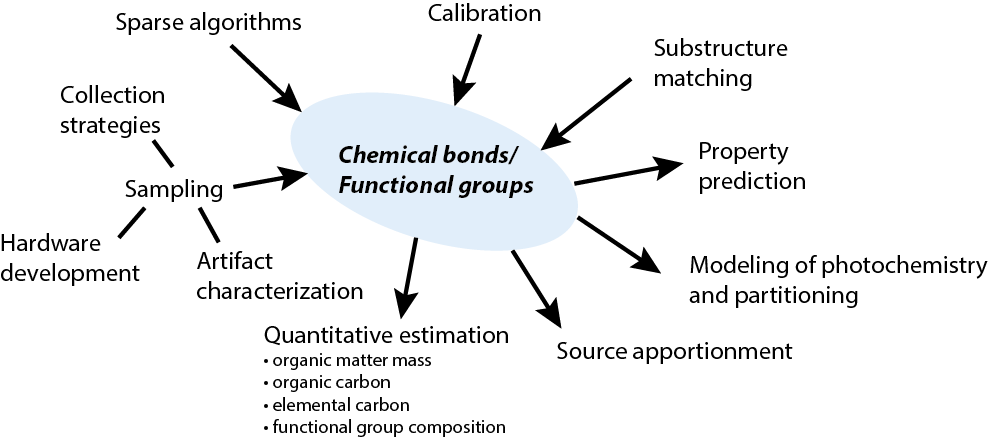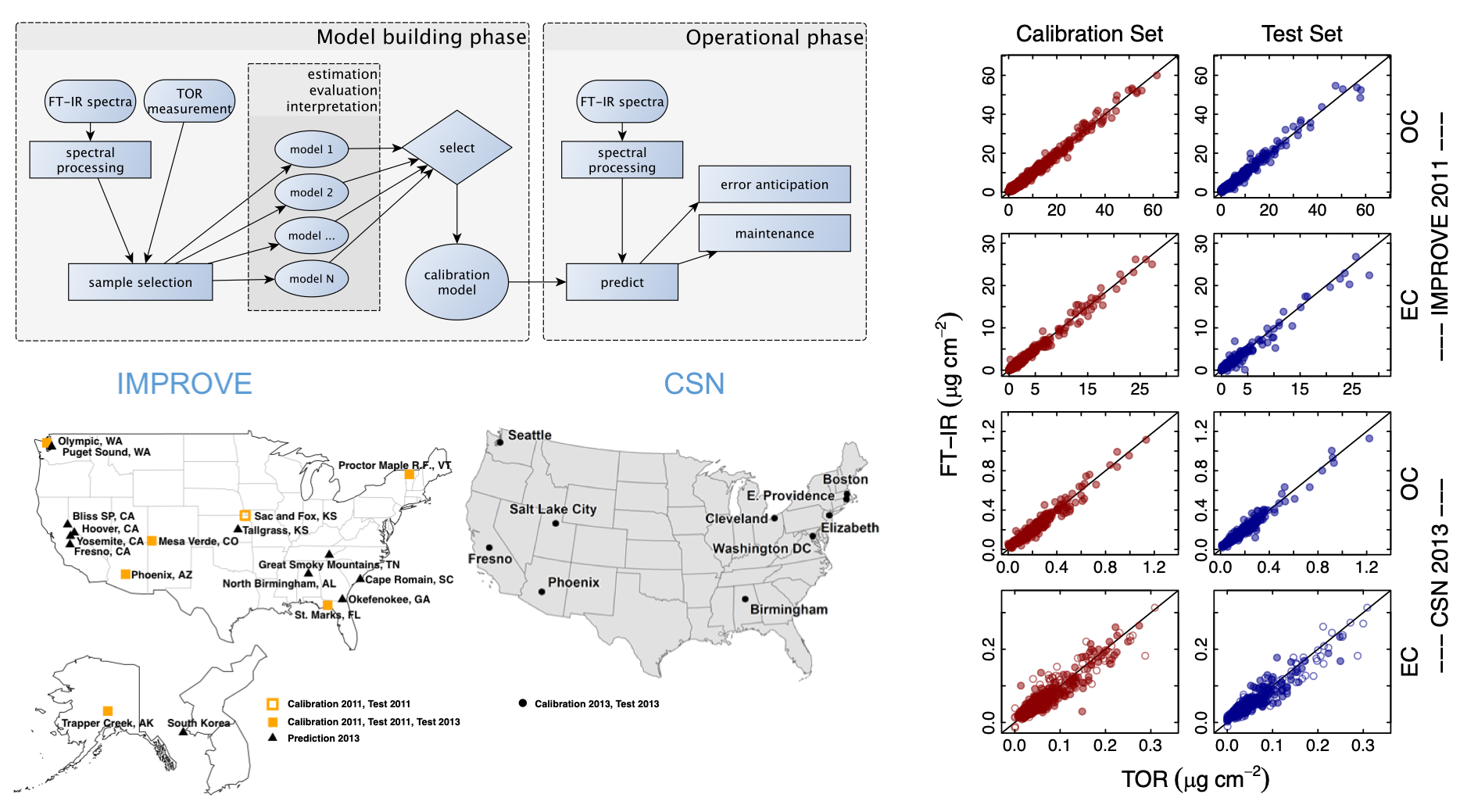Activity overview
Our research strategy focuses on unifying our understanding of complex organic aerosol mixtures through the structural properties of their molecular constituents.

- We develop or adapt algorithms for interpreting complex mid-infrared spectra of atmospheric and laboratory aerosol samples (calibration and sparse algorithms). With this software, we can estimate organic functional group concentrations, perform source apportionment, and associate vibrational modes to other aerosol measurements. List of software can be found here.
- We develop chemoinformatic tools to permit substructure matching and property prediction. List of software can be found here.
- We apply our algorithms to the analysis of atmospheric samples collected in monitoring networks and intensive field campaigns to provide useful chemical information.
- We use molecular dynamics simulation for prediction of dynamic properties (not easily accessed by measurement) in the domain of aerosol-cloud interactions.
- We are also developing methods for improving sampling of aerosols for infrared spectroscopy analysis.
Chemoinformatic analysis of functional groups
Oxygen-to-carbon (O:C) ratios and mean carbon oxidation states are often used to simplify the characterization of organic aerosol mixtures by their summed extent of oxidation. Functional group analysis can provide additional insight into the importance among different pathways of oxidation, but have previously been difficult to characterize systematically. Our chemoinformatic approach to analyzing molecular structures allows us to enumerate functional groups in arbitrary molecules, thereby linking contributions of 1) individual molecules to the overall functional group abundance of a molecule, and 2) functional groups to changes in the overall O:C ratios and carbon oxidation state.

Spectroscopy analysis – chemometrics and machine learning
Fourier transform infrared (FTIR) spectroscopy can provide cost-effective measurement of aerosol chemical composition that is useful for quantifying mass abundance, understanding sources, and characterizing properties relevant for climate and health impacts. While infrared spectra are complex to interpret, a suite of chemical information can be extracted provided that we can build robust inversion models for them. We currently focus on combining statistical and machine-learning approaches for estimation of organic functional groups and carbon content (organic and elemental) from FTIR spectra of atmospheric aerosols.

Spectroscopy analysis – hardware development
Some substrates onto which atmospheric particulate matter is collected are effectively opaque to infrared radiation. A common approach for analysis is to transfer the mass from the substrate to an optical element via solvent extraction. However, solvents interfere with spectroscopic analysis and must be evaporated prior to examination, and the remaining analyte can dry in a undesirable, non-uniform configurations. For this purpose, we developed a technique for rapid solvent elimination and uniform coating of a semiconducting crystal (ZnSe) by electrospray deposition for analysis by sensitive, multireflection (attenuated total reflectance) ATR-FTIR. The coating created by the spraying can be analyzed in the thin-film limit by the ATR-FTIR, which produces transmission-mode-like spectra.

Characterization of functional group evolution
Current studies are focused on measurement of functional group composition of aerosols from various emission sources (focused on biomass burning) and changes induced by oxidative aging under controlled laboratory conditions. These projects funded by the Swiss National Science Foundation and the European Research Council (PyroTRACH) further aim to unify our understanding of changes in molecular composition characterized by functional groups together with molecular and atomic changes measured concurrently by mass spectrometry and other instruments.